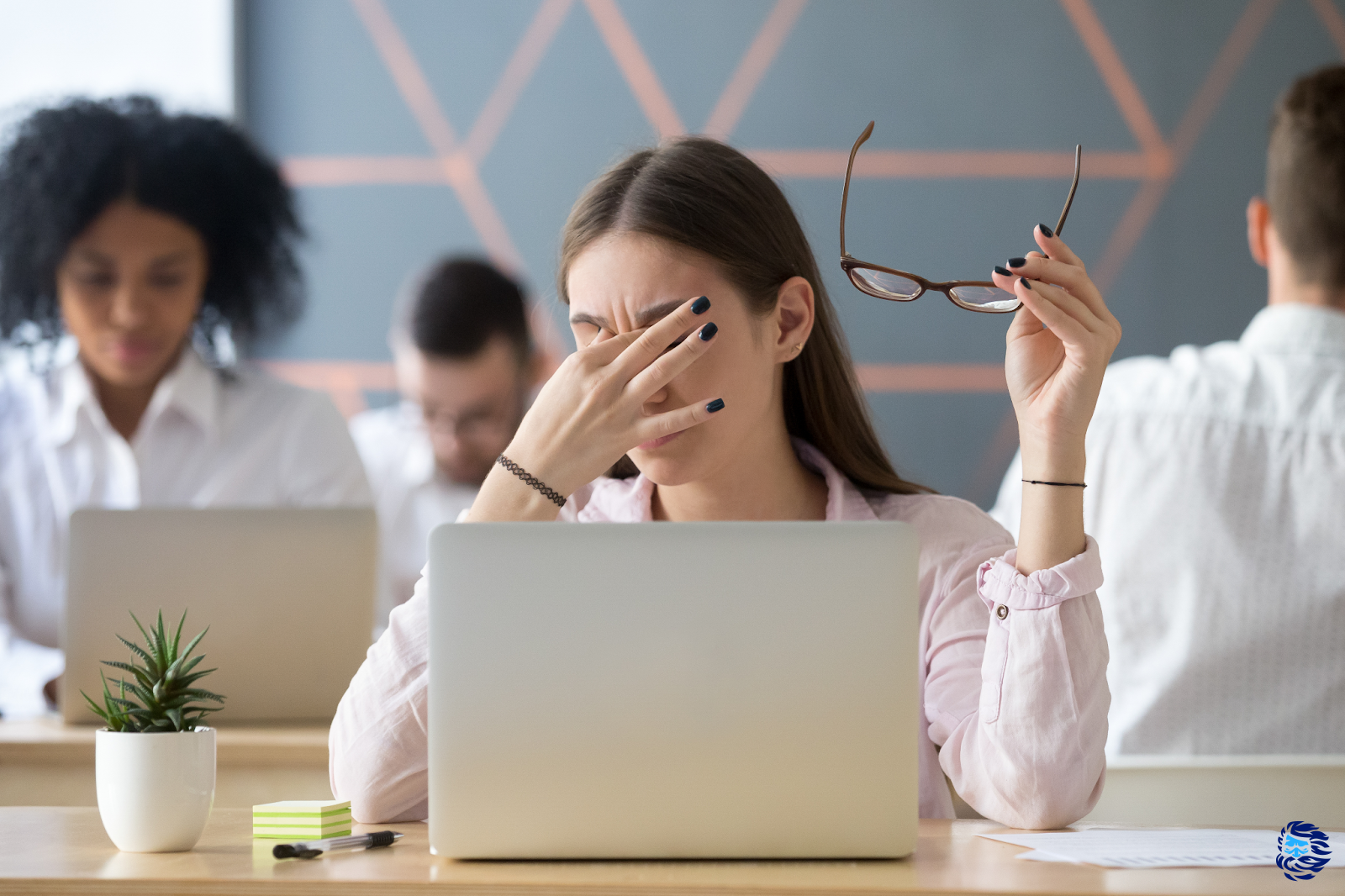
Headaches, a feeling of pain in the eyes, as if someone had poured sand under the eyelids, a veil covering the eyes - all these symptoms are well known to everyone who is forced to spend several hours at a time at the computer screen. Most people take the manifestations of computer visual syndrome for granted, and it is completely in vain, because a neglected GLC can turn into serious complications in the future. How to prevent their appearance and get rid of such an unpleasant ailment forever? Let's try to figure it out.
What cannot be: why are our eyes not on friendly terms with the computer?
The human body in its present form is the fruit of millions of years of evolution. Individual organs and their systems are arranged and function in exactly this way, and not otherwise, thanks to the consistent formation and consolidation of adaptations to the environment. But unlike animals and birds, a person is able not only to adapt to existence within a particular ecosystem, but also to create new living conditions for his species.
Over the years of scientific and technological progress, a unique object of the ecosphere has formed on our planet - the technosphere, part of which are personal computers and numerous mobile gadgets that we use every day. There is no doubt about the usefulness of these devices: each of them makes our life better, helping to solve a huge variety of tasks. That's just our body with you simply does not have time to adapt to the rapidly changing rules of the game.
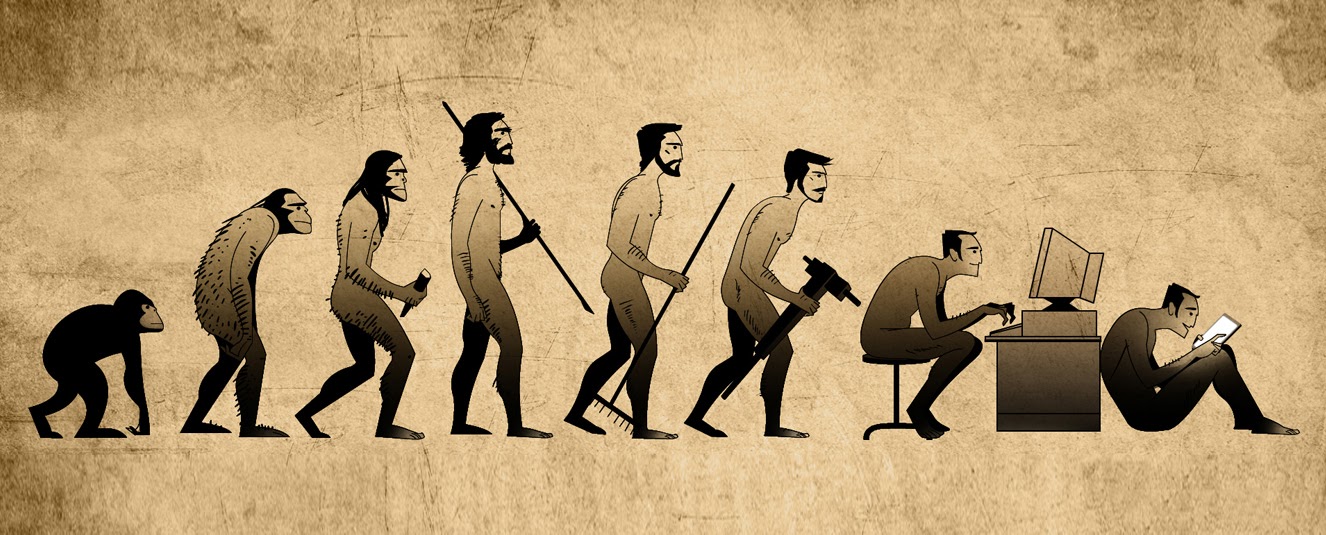
The human visual system turned out to be decidedly unprepared to read information from LCD and OLED displays. The thing is that the image formed on the monitor is fundamentally different from everything that exists in nature:
- symbols and pictures displayed on the screen are not integral, but consist of discrete elements - pixels;
- , ;
- (), .
The human visual system, which previously dealt only with transparent objects, was unable to adapt to images with such unusual characteristics. That is why long-term focusing of the gaze on the surface of the monitor, in addition to everything else located in the immediate vicinity of the operator's face, causes excessive overstrain of the ciliary muscles responsible for changing the curvature of the lenses of our eyes, which leads to the development of computer visual syndrome (CVS) - a pathological condition , which is the body's response to long-term (2 hours or more) work at the computer.

GLC has the following symptoms:
- decreased visual acuity (objects that were previously clear seem blurry);
- ( );
- - ( , );
- ( );
- ( , );
- , .
One of the manifestations of computer visual syndrome is corneal-conjunctival xerosis (dry eye syndrome). This condition is typical for a number of eye diseases, accompanied by a decrease in the amount and / or a change in the composition of the tear fluid. In the case of GLC, the reason for its appearance is the excessive expansion of the palpebral fissure when looking closely at the monitor, as well as a significant decrease in the number of blinking movements (from the normal 15–20 per minute to 4–5). This leads to overdrying of the cornea, which is accompanied by burning sensation in the eyes, their redness, pain when moving the eyeballs and the appearance of a feeling of "sand" under the eyelids.

Computer visual syndrome is fraught with a number of complications, the most serious of which are spasm of the ciliary muscle and habitually excessive stress of accommodation (PINA), which, in turn, contribute to the progression of myopia (myopia), and in PC users over 35 years of age provoke premature development of presbyopia ( age-related hyperopia due to irreversible changes in the structure of the lens). In turn, dry eye syndrome can cause the development of conjunctivitis (inflammation of the mucous membrane of the eye), meibomitis (inflammation of the sebaceous glands located in the thickness of the cartilage of the eyelids) and even ulcerative keratitis - inflammation of the cornea, accompanied by a violation of the integrity of its epithelial layer and affecting corneal stroma.
GLC prevention: how to save your eyes?
The best way to overcome computer vision syndrome is to eliminate the factors that cause it. To do this, it is enough to adhere to both simple and effective recommendations.
Set up your workplace

No matter how trite it may sound, everything you need to know about the organization of the PC user workplace is contained in SanPiN 2.2.2 / 2.4.1340-03 . Despite the fact that since January 1, 2021, this document has lost its legal force, having passed through the so-called "regulatory guillotine", many of the requirements set forth in it have not lost their relevance. The only drawback of this list of rules is the excessive dryness of the presentation and cumbersome phrases, which are so characteristic of any bylaws. So that you do not have to suffer, wading through the thorns of the office, we will outline the key points.
Let's start with the parameters of your office. Its windows should be oriented to the north and northeast - this will allow for optimal natural lighting during the daytime and will help to avoid situations when the blinding sun shines directly into the window opening in the morning and evening hours. If the windows are poorly positioned, blinds must be installed to diffuse light onto them. For interior decoration, it is best to use diffusely reflective materials with a reflectance of 0.7–0.8 for the ceiling, 0.5–0.6 for the walls and 0.3–0.5 for the floor. This gradation will allow you to achieve the most natural distribution of the light flux inside the room.
The desktop should be placed in such a way that the light from the windows falls on it from the side (most optimally from the left) Never place the table so that the window opening is behind your back or, on the contrary, directly behind the monitor. The monitor itself should be directly in front of your face, not to the side. The optimal distance from the eyes to the surface of the screen should be 60–70 cm, but not less than 50 cm. The center of the screen should be 15–20 degrees below eye level. In order not to suffer with calculations, we suggest using the following plate:
| Horizontal distance from eyes to monitor | Vertical displacement of the center of the monitor down |
| 50 cm | 13-15 cm |
| 60 cm | 16-18 cm |
| 70 cm | 19-20 cm |
It is necessary to remove lamps from the field of view, as well as any bright and glaring objects (mirrors, ceramics, paintings with glazed frames, etc.). Furniture with an anti-glare surface is a good choice for cabinetry.
Artificial lighting should be as uniform as possible and not create glare on the screen surface. The illumination level of the latter should not exceed 300 lux, while the illumination of the desktop should be in the range of 300-500 lux: this is necessary so that when working with documents you do not have to use high-intensity local lighting, which is also strictly prohibited. If in the process of work you periodically need to refer to printed materials, try to place them in the space between the keyboard and the monitor, or next to it at about the same distance (for this purpose, you can use a special holder).
Adjust the brightness of the monitor according to the overall light level

The brightness of the screen should match the ambient light level. To set it up correctly, just open a blank page in Word or Google Docs. If the white sheet on the screen shines unbearably, like a lamp, then the brightness should be turned down. If, on the contrary, it seems grayish and dull to you, the brightness must be increased.
Life hack!
Choosing the right font size can help reduce eye strain. To calculate it, you can use the so-called "triple rule": the size should be such that you can freely read the text on the screen from a distance of three times the standard. That is, if you usually sit at a distance of 60 cm from the monitor, then you must distinguish between letters and from 180 cm.
Observe the 20-20-20 Rule
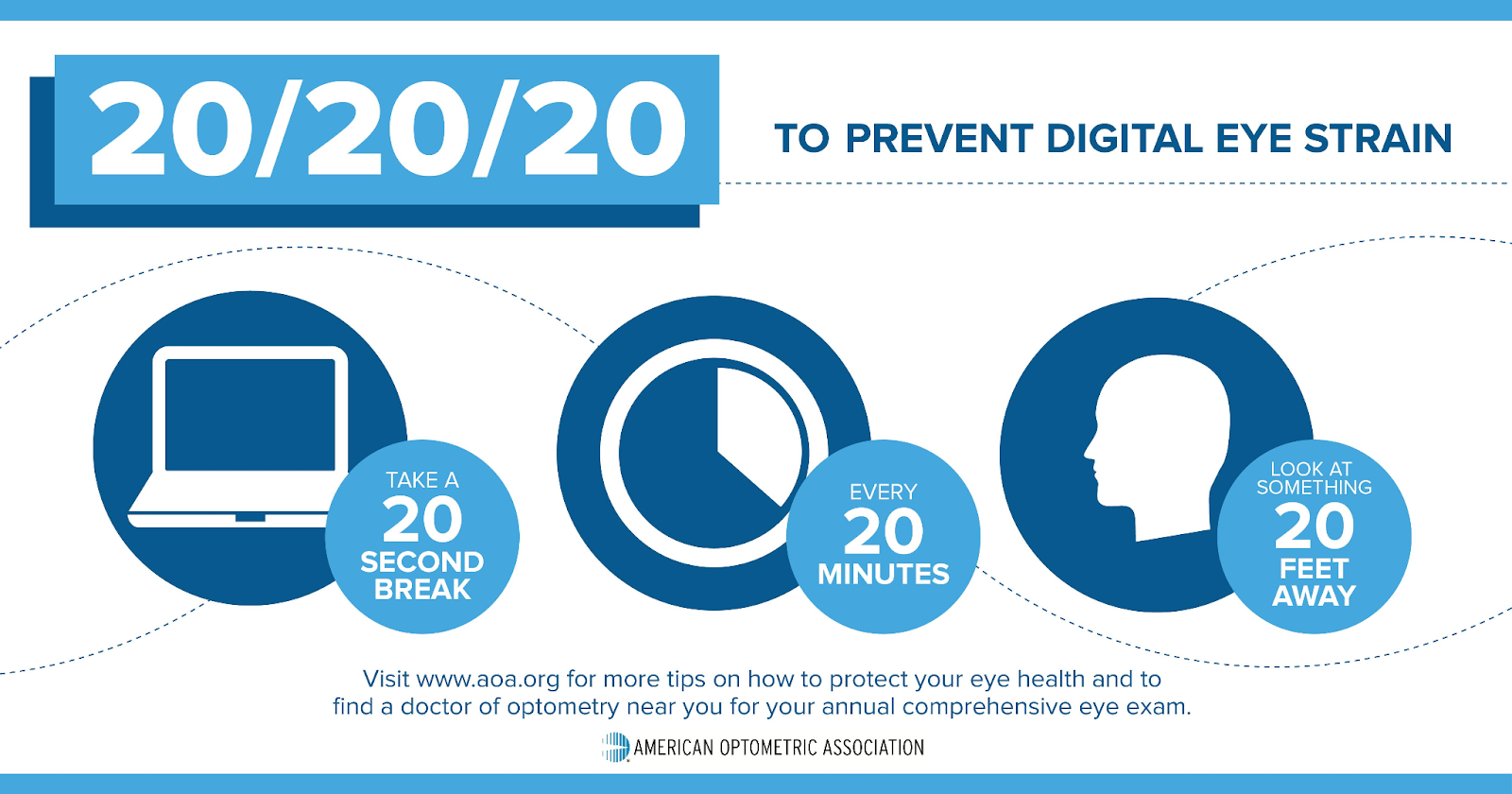
This method of "unloading" the visual apparatus was proposed by the American Optometric Association . The essence of the technique is extremely simple: all that is required during long-term work at the computer is to take 20-second breaks every 20 minutes and look at distant objects located at a distance of at least 20 feet (about 6 meters) from you. At this point, the ciliary muscle of the eye relaxes as much as possible, which helps to prevent its spasm.
Life hack!
Based on the 20-20-20 rule, many helper applications have been created, ranging from simple reminders to programs that forcibly block a computer monitor after a specified time (these include, for example, POMY- a free utility available in versions for Windows 10 and macOS). If you find it difficult to control yourself, we recommend using one of these advisors.
Blink more often.
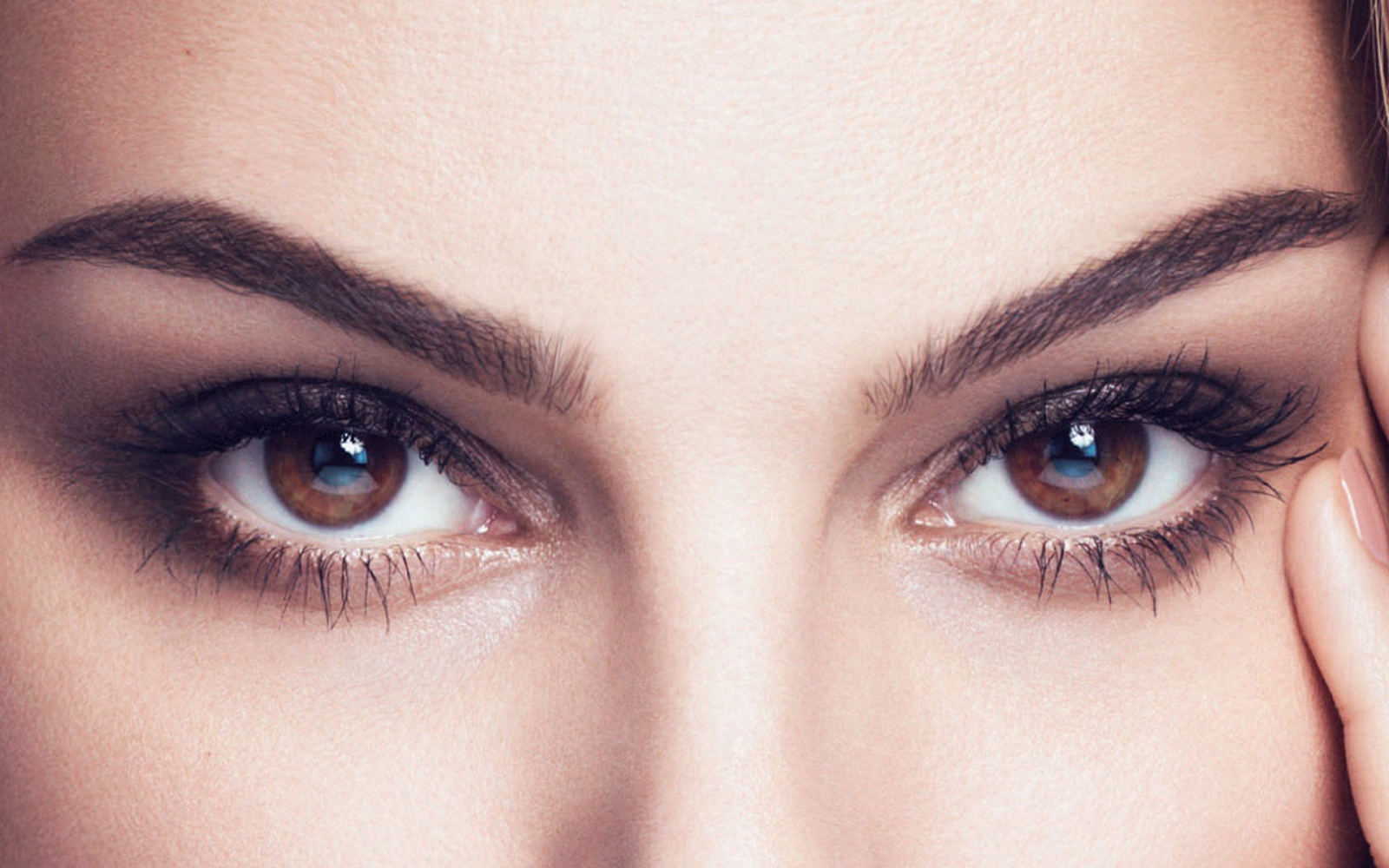
This advice may sound rather strange, but it is the most effective and physiological way to get rid of the dry eye syndrome that develops with GLC. At first, it will be difficult for you to keep track of the number of blinks, but by regularly applying volitional efforts and forcing yourself to blink more often (approximately every 3-5 seconds), you will eventually accustom your body to a new rhythm and normalize corneal hydration.
Life hack!
A household humidifier will be a great help here. Increasing the humidity in the room will reduce the rate at which lacrimal secretions evaporate from the surface of the cornea and further protect your eyes.
Master blind typing

Let's make a reservation right away that in this case we are not talking about the standard ten-finger method, the main goal of which is to achieve maximum productivity when typing. While this is certainly a very useful skill for any programmer, writer or office worker, the main thing you should learn is not to look at the keyboard while you work.
In this case, it absolutely does not matter how many fingers you use and how correctly you distribute the keys between them. Indeed, eye health is affected not by the typing speed, but by the extra load on the accommodative apparatus, which arises with constant refocusing of vision, when you almost every moment move your gaze from the monitor to the keyboard (which, moreover, is located even closer than the screen) and back. To learn how to type blindly, you can use one of the many tutorials, courses, or keyboard simulators available on the Internet.
Life hack!
The ability to learn the blind typing method largely depends on the psychophysiological characteristics of a particular person. At first, it is extremely difficult for many to give up the habit of peeping at the keys. The purchase of keycaps without labeling can help here. As you memorize the location of the keys, change the keycaps with the learned letters and symbols to empty ones.
A compromise solution can be the transition to keycaps with side engraving.
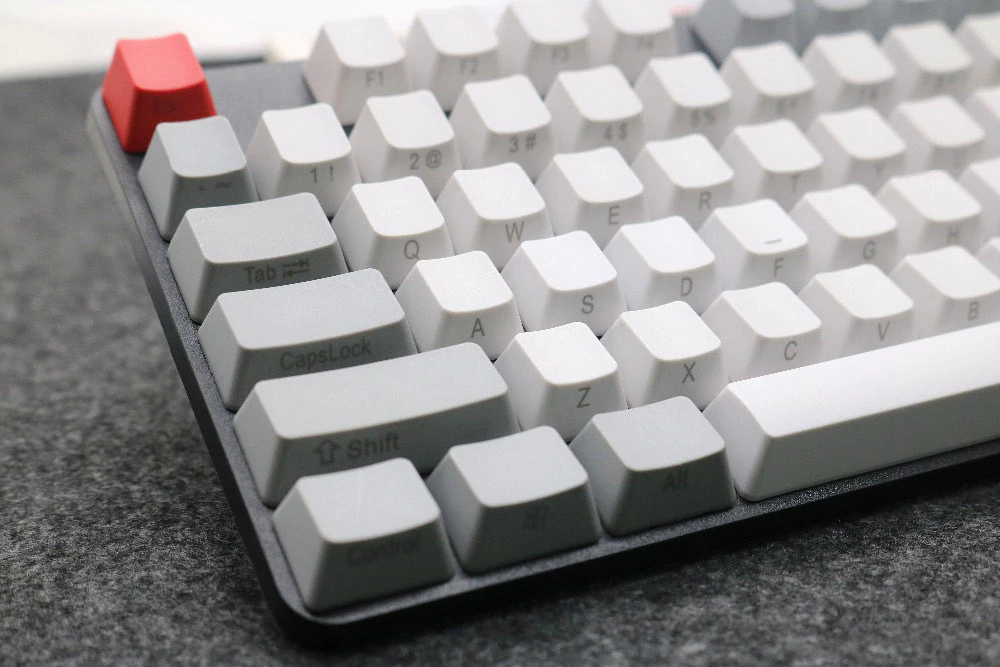
On the one hand, glancing at such a keyboard, you will not be able to see the characters immediately, which makes it very convenient for educational purposes. At the same time, if you completely forget the meaning of this or that key, you can always peep just by tilting your head slightly.
Buy an e-book

In modern realities, buying an e-book seems pointless. Indeed, why spend money on a relatively expensive device if you can buy a much more functional smartphone or tablet for the same amount? Meanwhile, "reading rooms" really help to prevent the development of GLC, which makes them almost indispensable for any book lover or person who is forced to work a lot with texts on duty. The secret lies in the display device, which is fundamentally different from the LCD and OLED matrices used in modern monitors.
The terms "electronic paper" and "electronic ink", used for the screens of such devices, are not just marketing names, because for the human eye there is practically no difference between an E-Ink Carta and a paper page. Each pixel of such a screen is a microcapsule filled with liquid, in which particles of pigment of white (have a positive charge) and black (have a negative charge) colors float. The image on the screen is formed due to the movement of pigment particles inside the capsule-pixels when a voltage of the corresponding polarity is applied to the upper and lower electrodes.
https://i.stack.imgur.com/qZBXm.gif
The display itself, made using electronic ink technology, does not contain light-emitting elements, that is, the human eye sees text on an E-Ink screen only due to light from external sources reflected from pigment particles. Simply put, e-paper "works" just like real paper. This provides another important advantage - as is the case with the pages of paper books, the brightness-contrast parameters of the displays of electronic readers are determined by the parameters of the light environment in which you are.
When reading ordinary books, "automatic brightness control" always works: if you read in bright light, then the surface of the pages becomes brighter, since the intensity of the reflected light flux increases, and if you go into a poorly lit room, the brightness of the pages will also decrease. This happens in a similar way with e-books, which allows you to solve the problem of brightness-contrast differences that inevitably occur when working with conventional monitors.

And even the backlighting of E-Ink screens turns out to be much more physiological compared to the way it is implemented in monitors and mobile devices. If the backlighting of LCD displays is carried out by LEDs located behind the layer in which the image is formed, and the pixels of the OLED matrixes glow by themselves, then the backlight of E-Ink displays works just like natural light. Due to the nature of electronic paper, placing a light source behind the pigment layer turns out to be almost meaningless: to appreciate the "effectiveness" of this approach, just try to look at the lamp through a sheet of thick paper, and you will immediately understand what is at stake. That is why the light emitted by LEDs propagates in a narrow outer layer of the screen, illuminating the surface of the pigment matrix from above,as if you are reading an ordinary book in the light of an electric lamp.
In the readers of the upper price segment, the backlighting is realized using the “flicker-free” technology, that is, it has absolutely no flicker, which makes reading even more comfortable for the eyes. And some models of e-books also allow you to adjust the color temperature of the backlight. Although this function does not directly affect visual acuity, the nature of the lighting affects the mental state of a person .
For example, optical radiation of warm tones with a yellowish tint (about 3000K) is perceived by the brain as sunlight at sunset, acting on the body soothing and relaxing, so this kind of illumination will be the best choice for those who like to read before bedtime. Cold white light (5000K), on the other hand, is associated with the midday sun, improving concentration and reducing sleepiness, which means that such a backlight is ideal for working with documents.
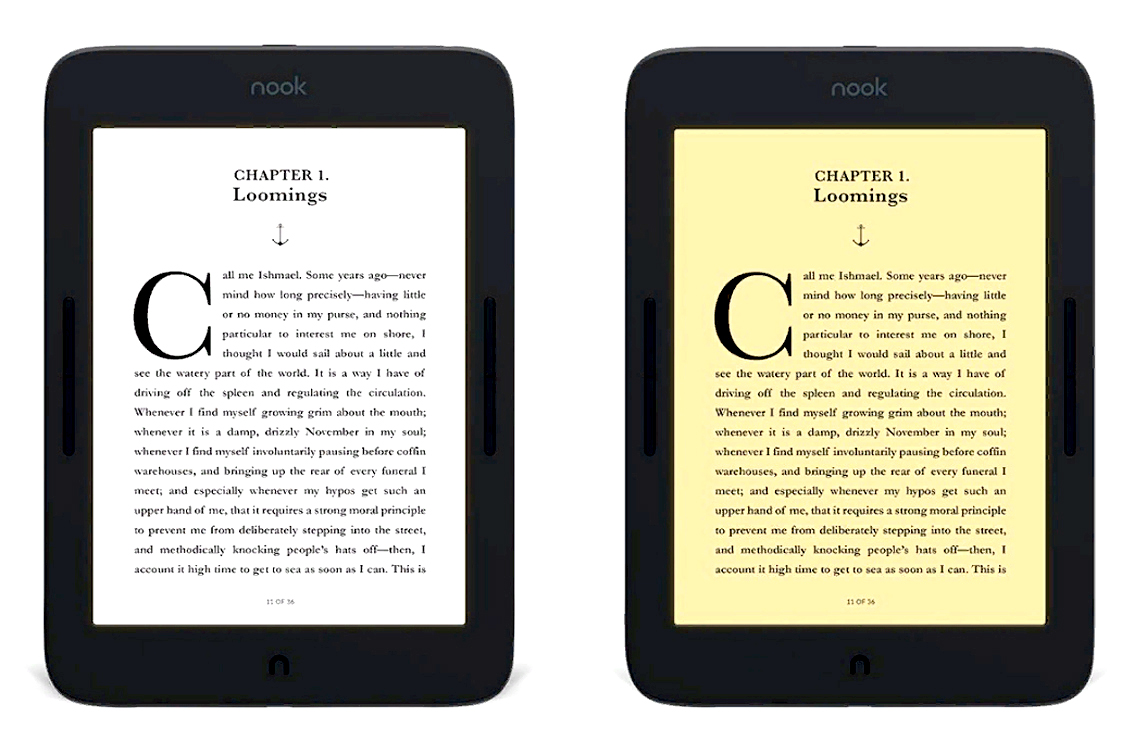
Finally, it is worth mentioning that the surface of the E-Ink screens has a matte coating that “blurs” reflected light and prevents glare, which also makes reading more comfortable.
Life hack!
Readers are not only suitable for reading novels, but also great for working with documents. The only problem that you may encounter is incorrect recognition of certain text file formats, or the complete lack of support for some of them. Free open source e-book manager Caliber will help you solve it. , which allows you not only to conveniently manage your electronic library, but also boasts the function of mass conversion of files from one format to another, thanks to which you can literally in a couple of clicks convert DOCX documents into EPUB or FB2, which are more suitable for e-books.
PS On the Internet, you can find many so-called "simulators" for the eyes, made in the form of applications or videos, all training in which is reduced to tracking moving objects and three-dimensional shapes. Such pseudo-simulators will not help you in the fight against computer visual syndrome, but will only cause even greater eye fatigue, which, in particular, is facilitated by the love of the authors of such creations for acid colors and bright flashes.
Let our consciousness be easily deceived with the help of optical illusions, for the eye the conditional endless corridor going into the distance will remain the same flat image on the surface of the monitor, and no matter how much you look at it, the ciliary muscle will still be in strong tension. It is much more useful to take a break for a few minutes and admire the view from the window. Even if there is absolutely nothing remarkable there, looking at distant objects will help your eyes relax and return to normal.
Cloud servers from Macleod are fast and inexpensive.
Register using the link above or by clicking on the banner and get a 10% discount for the first month of renting a server of any configuration!
